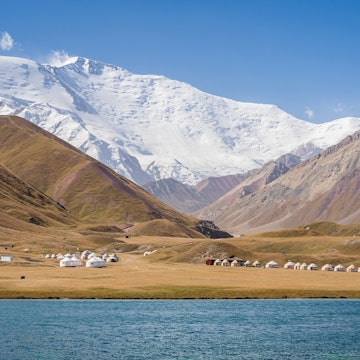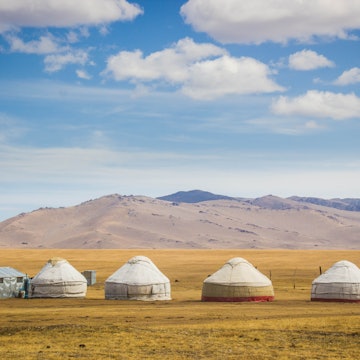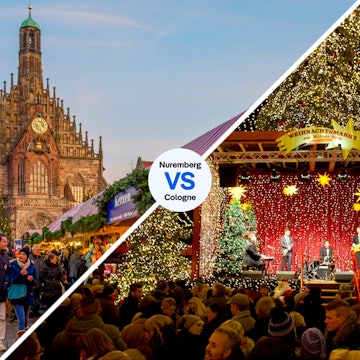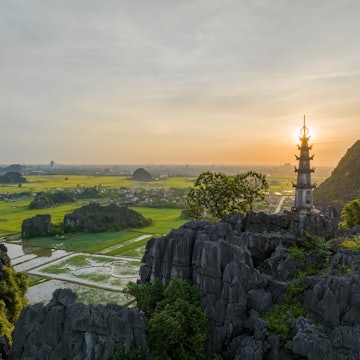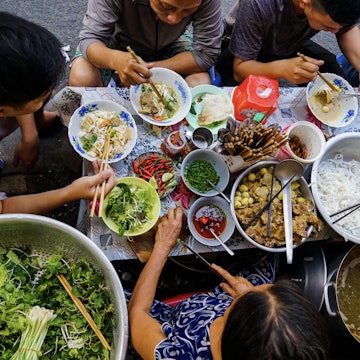
Trailblazers: crossing into China as a Lonely Planet writer in the 1980s
Jul 7, 2019 • 8 min read
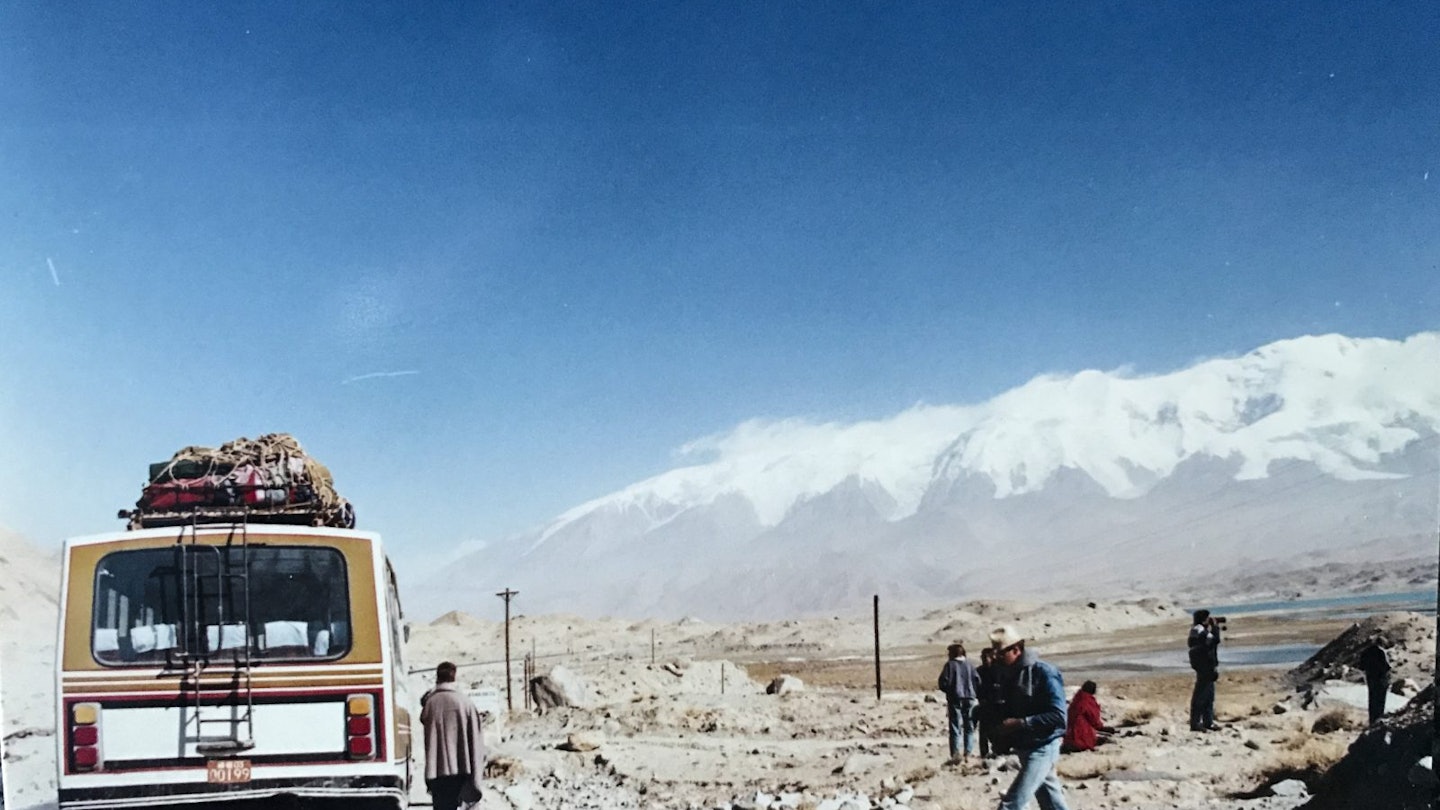
Bus from Tashkurgan stopped at Karakul for a photo, Xinjiang © Steve Waters / Lonely Planet
Our Trailblazers series sees Lonely Planet's guidebook writers reflect on past adventures, reminisce a little, and compare their experiences past and present. Here, our Melbourne-based writer Steve Waters recalls his time researching in China, when the country was starting to emerge from isolationism.

Mostly remembered for bad hair, terrible music and the fall of European communism, the 1980s also witnessed China cast aside its Maoist blinkers and take the first, tentative steps towards a market economy. With the 70s overland hippie trail shutdown by the Soviet-Afghan War, independent travellers began trickling north to the Middle Kingdom. The breakup of the Soviet Union soon followed, neighbouring borders reopened, and almost overnight the ancient silk-route pathways across Central Asia were re-established. Once again, all roads led to China.
China’s historical isolation was in part due to its constraining geographical boundaries – impenetrable mountain ranges, inhospitable deserts, impassable rivers and pirate-laden seas. Nowhere is raw geography more evident than the border with Pakistan along the jagged Karakoram Range, in wild-western Xinjiang.
The Karakoram Highway: 1988 to 1997

Vicky was having trouble breathing. We’d left the warmth of the Pakistani 4WD at the top of the ice-covered, 4700m Khunjerab Pass, to photograph the kitsch, dragon-topped Chinese welcome arch. After long days spent on dodgy local transport, hurtling maniacally along an ever more-crumbling road perched precariously above raging torrents, and rounding treacherous blind corners laden with landslides, we were lucky to be here. Our ears were ringing, either from the sudden altitude gain or the days of incessant, distorted Urdu music. The torturous switchback down the Pass of Blood to the Pakistani border village of Sost lay behind us. Only opened to tourists in 1986, there was no better route at the time for aspiring overland travellers. We snapped our pics, wound on our film, and didn’t tarry - China awaited!

The Chinese border post at Pirali, a concrete bunker a few kilometres from the top of the pass, provided our first taste of Chinese bureaucracy, when they charged us for their immigration forms. We were also obliged to buy FECs.
Foreign Exchange Certificates were the official tourist money used for most hotels, transport and foreign goods. Renminbi (RMB), (literally people's money) was used for food and everything else. Officially 1 FEC = 1 RMB but there was a raging black market offering more lucrative rates. Travellers tried all sorts of tricks to pay for things in RMB while the black marketeers tried all sorts of tricks on the travellers – the golden rule: always count the RMB yourself before handing over the cash.
After Pirali, our now-Chinese bus hit a pothole and lost the back window while our oblivious driver killed the engine and coasted in breezy freefall all the way down to Tashkurgan at 3100m, a bleak Silk Road outpost. The obligatory Transport Hotel (TH) — buses didn’t travel overnight in Xinjiang then — had one 40-bed dormitory and two squalid toilets.

Chinese people dealt with long journeys by alternatively sleeping and eating. Any refuse – cigarettes, peanut shells, sunflower seeds, tea leaves, spit, vomit or baby piss went straight onto the floor, regardless of whether you were on a bus, train or boat (beware the bottom bunk!). Everyone smoked in China in the 80s. On one forgettable slow boat trip up the Yangtze River in the middle of winter, we alternated between asphyxiating in the smoke filled 4th class dormitory awash with the above refuse, and freezing to death outside. Attempts to self-anaesthetise by sculling bottles of sweet Chinese wine, sealing 'Help – please rescue!' notes into the empties before flinging them over the side, invariably failed.

The incredible scenery of southern Xinjiang unfolded the next day, the mammoth peaks of Muztagh-Ata (7509m) and Kongur Shan (7649m) dwarfed the road, and Kyrghiz nomads and Bactrian camels lounged by Kara Kul. Fabled Kashgar, with its colourful, inscrutable Uighurs (still in the majority), was less of a culture shock than the Han Chinese-dominated cities yet to come, with their drab, Mao-jacketed staring squads, obstructive ticket sellers and outwardly hostile hotel staff. In Kashgar, it was the tourists who gawked, travelling in packs and wielding zoom lenses like targeting lasers around the already popular Sunday Market.
As perfectly final as a Russian nyet, méi yǒu was the first phrase every traveller learnt. Applied equally to a request for a room, a beer or a bus ticket to Lhasa, it roughly translated as 'don’t have', though was more commonly understood as 'no, not now, not for you, not ever'. Learning numbers and key phrases in Mandarin was a necessity, for while a ticket request for jīn tiān (today) might provoke a méi yǒu, one for ming tiān (tomorrow) might not. Restaurants were easier; you simply walked into the kitchen and pointed at ingredients.

To be fair, life in the 80s for the average Chinese person wasn’t easy. The excesses of the Cultural Revolution were still a recent memory, there was almost no middle class, and they had to fight for everything or miss out. If westerners found buying travel tickets an ordeal, the Chinese had to deal with it every day. Internal tourism was not encouraged and strangely attired foreigners with no understanding of the language or local customs were indeed a curiosity. Personal space was unknown and nobody had a problem with staring - at foreigners, or at each other. A year later, in a small town in Xishuangbanna I witnessed a crowd of people gathered outside a building, staring in the window. A student explained – a woman inside was giving birth.
We stood in the freezing Kashgar gloom at 4am, wondering if our bus was running on official Beijing or local Xinjiang (2hrs behind) time. The bus left when it was full four hours later with the wind howling through the glassless door. Alternatively frozen then sandblasted, it took us three days to cross the Taklamaklan Desert, weathering constant breakdowns, overnighting in spartan THs, and arriving in Turpan magnificently dust-covered.

Crossing the Kazakh border nine years later, after weeks travelling through bleak Central Asian ‘stans still recovering from their collective communist hangovers, we found that FECs, Mao-suits and Transport Hotels had been replaced by thriving private enterprise, day-glo nylon fashions and sleeper buses. A rapidly expanding economy fuelled a growing middle class. Internet cafes were everywhere. After months of grey, greasy mutton, Chinese food was a taste sensation. The Taklamaklan was still an adventure (even sleeper buses broke down) though no longer a three day epic. Alas, the kitsch dragon arch on the Khunjerab Pass was gone.
Days on a hard-sleeper train brought us to Beijing, in the 80s a sleepy city of massive grey Soviet-era buildings and wide avenues serenaded by bicycle bells. Narrow hutongs (alleys) led to informal markets, hidden temples and calligraphy shops, while the whole city lay cloaked in a charcoal burner funk. Private vehicle ownership was non-existent and foreigners could only stay in several designated hotels; the infamous Qiao Yuan was the budget favourite. Fast-forward ten years and the hutongs and bicycles were already disappearing, making way for futuristic hotels, shopping malls and a concentrically expanding ring-road system catering for a newly-insatiable appetite for cars. By the time the Olympics reached Beijing in 2008 the city had a word-class subway system and world-class air pollution and traffic congestion.

Every trip I made to Beijing between 1999 and 2011 astounded me more, with the city’s progress from dour Maoist past to world-leading 21st-century megacity. While it was once easy to distinguish 'Overseas Chinese' from mainlanders by simply looking at their clothes, by the end of the millennium the latest fashions and mobile phones were just as prevalent on Wangfujing as they were in Causeway Bay or Tokyo. English was more widely spoken, and the people far more friendly, helpful, affluent and relaxed.
Yunnan had a laid back reputation among travellers, due to its milder climate and large number of ethnic minorities. Dali’s old town, on Erhai Lake in the Bai Autonomous Region, was a favourite hangout to eat wok-pizza and explore the neighbouring villages. Under the gaze of Jade Dragon Snow Mountain, picture postcard Lijiang was home to the matriarchal Naxi and close to the forbidden Zhongdian route to Tibet. Every traveller purchased a piece of Dali tie-dye or Naxi calligraphy. However, by the late 90s, growing internal tourism markedly changed the once tranquil, picturesque villages as new airports, hotels and shopping malls rapidly proliferated.

We took a sporting route from banana pancake capital Yangshuo (already a backpacker magnet) by bus to Wuzhou (with writhing sacks bound for Canton’s markets) then overnight ferry to Guangzhou. At the train station, the lucky got jīn tiān reservations for Shenzhen, the rest just stormed on-board anyway. We now exercised our perfected méi yǒu ruthlessly. Thankfully it was a non-stop express. Clearing Shenzhen customs, we crossed the bridge to Hong Kong’s sparkling Lo Wu KCR station. The KCR trains were spotless; nobody was coughing, spitting, staring or shelling peanuts onto the floor. Someone remarked 'wow, it’s not like China'. This effect soon wore off after paying a fortune for a mouldy room in Kowloon’s notorious Chunking Mansions, beer was 10x more expensive than on the mainland, and the only place we could afford to eat was McDonalds. We almost missed the staring.
Trailblazers: Trekking in East Africa as a Lonely Planet writer in the 1990s
To follow your own road to China, check out Lonely Planet’s China Travel Guide




